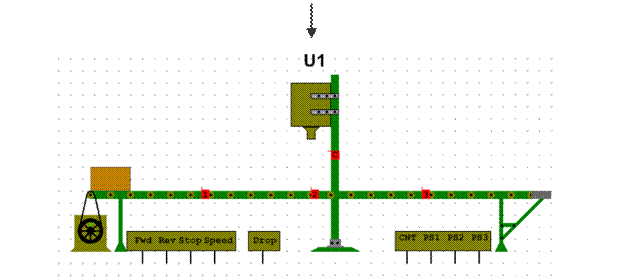
The most prominent phenomenon which fashioned the lives of ancient Egyptians was the powerful Nile. The Greek historian Herodotus once called Egypt “the gift of the Nile”. The Nile is the longest in the world. It flows from Central Africa and empties into the Mediterranean Sea more than 4, 000 miles away. The Nile dominated everywhere. Life apart from the river was unthinkable and land far from the river was unprivileged. All year long the Nile was not only a means of transportation, it also offered sweet water and bountiful provisions of fish and waterfowl. But it was the annual flood that caught the imagination. The sudden and mysterious change in the river’s behavior became naturally associated with divine power. If the water didn’t reach the far-lying lands it could result in hunger. On the other hand, an overabundant flood could produce equally catastrophic results because it would destroy many homes (built of Nile mud-bricks) and endanger the temples.
 The dark, fertile soil which covers the Nile Delta and fields on either side of the river Nile along its course, stands in sharp contrast to the reddish desert sand or sandstone ever present almost everywhere else. Around mid-September, following the annual snow melting in the region, the level of water rose steadily and dramatically. The fields would remain under the water for about four months every year (inundation season). When the waters finally receded, the river gained its original bed, the fertile silt would remain on the fields in the form of a black moist deposit, enabling immediate and intensive cultivation.
The dark, fertile soil which covers the Nile Delta and fields on either side of the river Nile along its course, stands in sharp contrast to the reddish desert sand or sandstone ever present almost everywhere else. Around mid-September, following the annual snow melting in the region, the level of water rose steadily and dramatically. The fields would remain under the water for about four months every year (inundation season). When the waters finally receded, the river gained its original bed, the fertile silt would remain on the fields in the form of a black moist deposit, enabling immediate and intensive cultivation.
Without the water provided by the Nile all Egypt would be desert, for it received little rainfall. To ensure for their crops each year, the ancient Egyptians built reservoirs and used canals to carry water to fields. Digging canals and reservoirs required the labor of many workers. People invented new technology and carefully planned and organized large irrigation projects. They also devised a calendartouse in predicting when floods would come. The year was made up of three seasons: the time of flood, the time when the river returns to its banks, and the rainless time before the next flood. Besides encouraging farming, the Nile was an excellent transportation route. It not only provided access to the Mediterranean and South Africa, it also allowed Egypt to trade with other regions. At the same time vast deserts on other side of the Nile protected Egypt from attack and it allowed the people enjoy long periods of peace and prosperity.


 The dark, fertile soil which covers the Nile Delta and fields on either side of the river Nile along its course, stands in sharp contrast to the reddish desert sand or sandstone ever present almost everywhere else. Around mid-September, following the annual snow melting in the region, the level of water rose steadily and dramatically. The fields would remain under the water for about four months every year (inundation season). When the waters finally receded, the river gained its original bed, the fertile silt would remain on the fields in the form of a black moist deposit, enabling immediate and intensive cultivation.
The dark, fertile soil which covers the Nile Delta and fields on either side of the river Nile along its course, stands in sharp contrast to the reddish desert sand or sandstone ever present almost everywhere else. Around mid-September, following the annual snow melting in the region, the level of water rose steadily and dramatically. The fields would remain under the water for about four months every year (inundation season). When the waters finally receded, the river gained its original bed, the fertile silt would remain on the fields in the form of a black moist deposit, enabling immediate and intensive cultivation.


